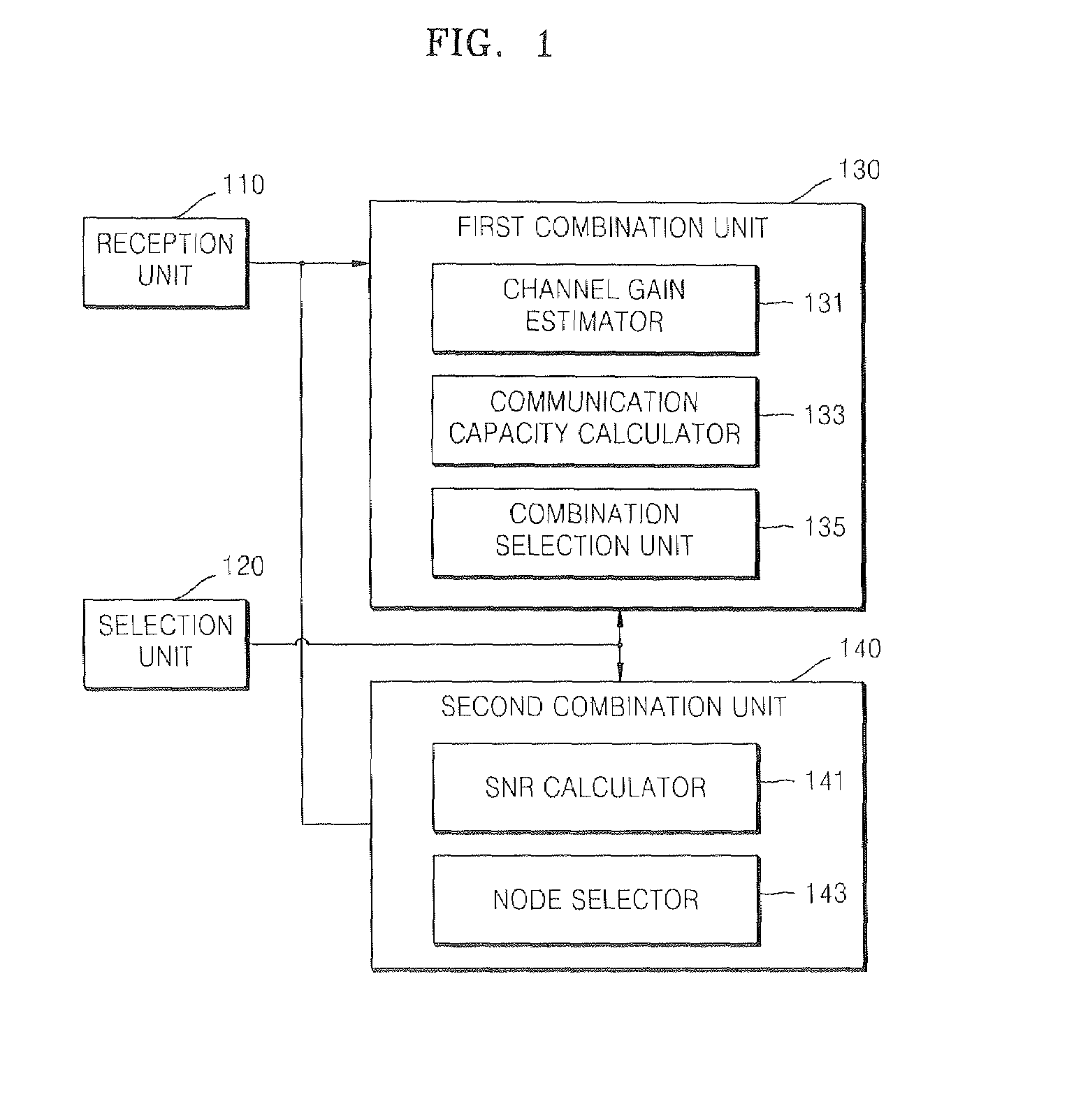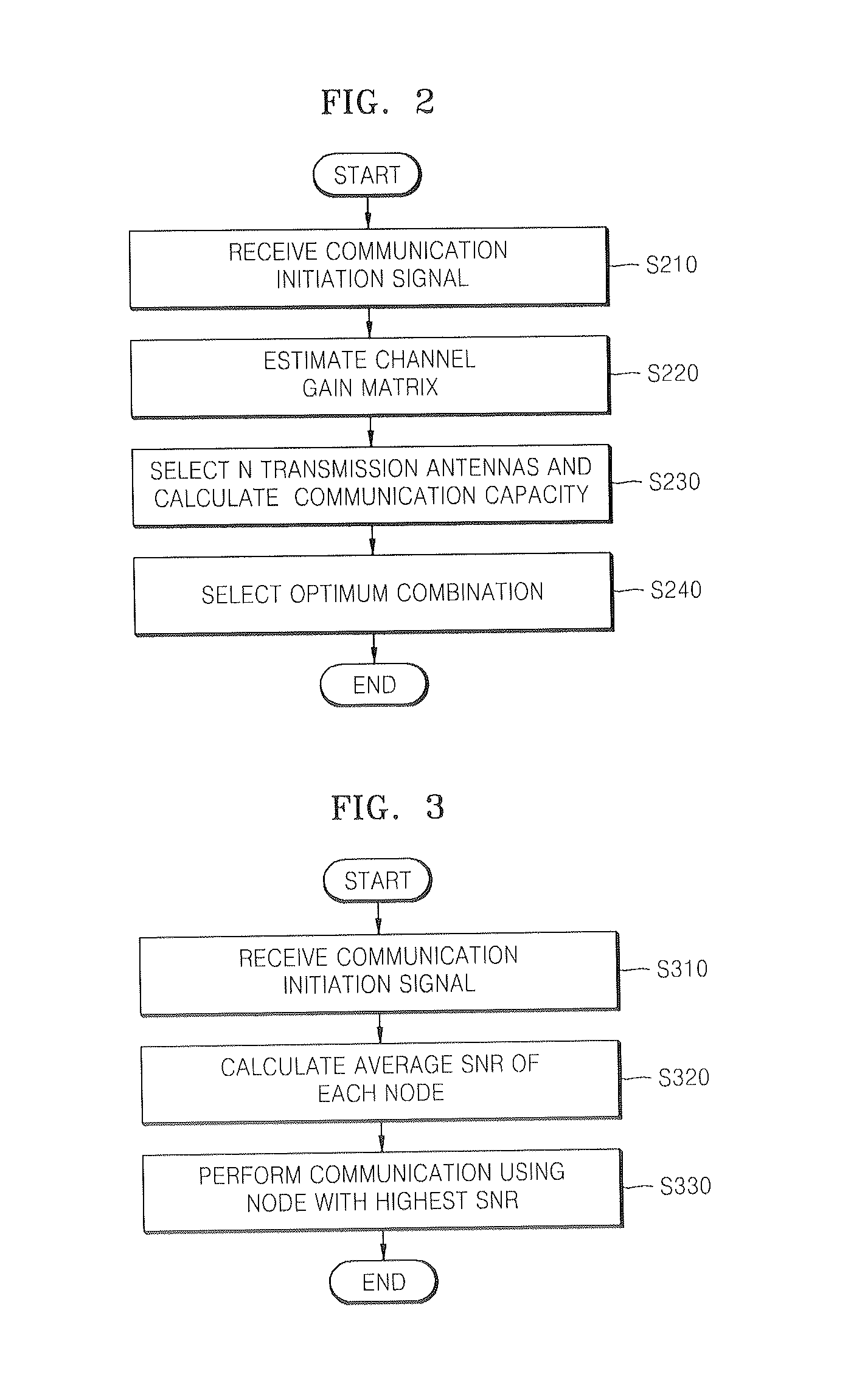Apparatus and method for selecting antennas and nodes MIMO communication system
a communication system and antenna technology, applied in the field of antenna and node selection apparatus, can solve the problems of high link failure rate, inability to obtain spatial multiplexing gain, communication capacity decrease, etc., to prevent the quality of received signals from deteriorating, prevent the attenuation of received signals, and maximize spatial multiplexing gain
- Summary
- Abstract
- Description
- Claims
- Application Information
AI Technical Summary
Benefits of technology
Problems solved by technology
Method used
Image
Examples
Embodiment Construction
[0019]The present invention will now be described more fully with reference to the accompanying drawings in which exemplary embodiments of the invention are shown.
[0020]FIG. 1 is a block diagram of an apparatus for selecting antennas in a multi-input multi-output (MIMO) communication system, according to an embodiment of the present invention, FIG. 2 is a flowchart illustrating a method of selecting antennas in a MIMO communication system, according to an embodiment of the present invention, FIG. 3 is a flowchart illustrating a method of selecting antennas in a MIMO communication system, according to another embodiment of the present invention, FIG. 4 is a schematic diagram illustrating a typical outdoor MIMO communication system equipped with an array antenna, FIG. 5 is a diagram illustrating communication capacity outage performance curves of the MIMO communication system illustrated in FIG. 4, FIG. 6 is a schematic diagram illustrating a MIMO communication system having a macrosc...
PUM
 Login to View More
Login to View More Abstract
Description
Claims
Application Information
 Login to View More
Login to View More - R&D
- Intellectual Property
- Life Sciences
- Materials
- Tech Scout
- Unparalleled Data Quality
- Higher Quality Content
- 60% Fewer Hallucinations
Browse by: Latest US Patents, China's latest patents, Technical Efficacy Thesaurus, Application Domain, Technology Topic, Popular Technical Reports.
© 2025 PatSnap. All rights reserved.Legal|Privacy policy|Modern Slavery Act Transparency Statement|Sitemap|About US| Contact US: help@patsnap.com



